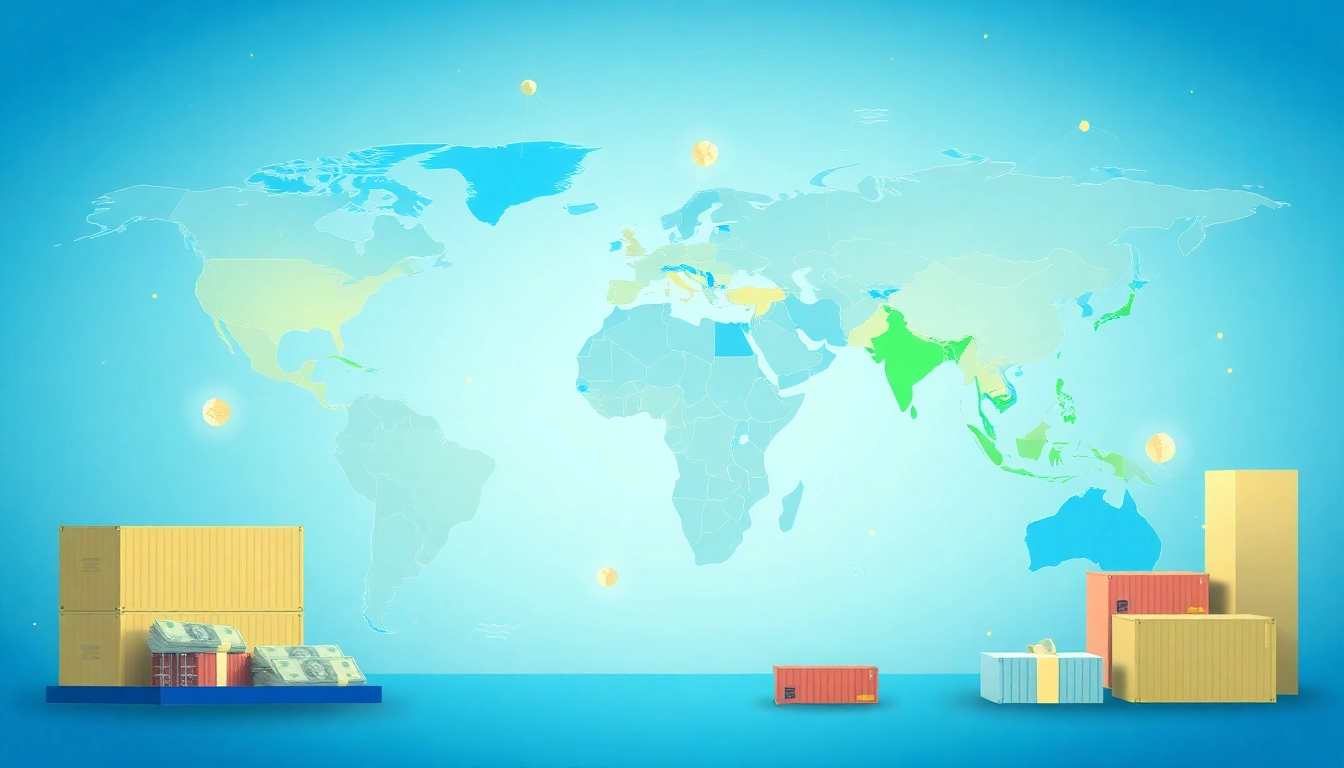Introduction to Trade Agreements
Trade agreements play a significant role in shaping the economic landscape of countries across the globe. They are legally binding agreements between two or more nations that establish the rules and guidelines for international trade. These agreements can take various forms, including free trade agreements, customs unions, and regional trade agreements, each designed to facilitate smoother trade by reducing barriers such as tariffs, import quotas, and regulations. In this context, trade agreements can not only bolster economic growth but also enhance diplomatic relationships between nations.
Definition of Trade Agreements
A trade agreement is a formal understanding between two or more countries that delineates the terms of trade, including the exchange of goods and services. By clearly establishing the rights and obligations of each party, trade agreements help to reduce uncertainty in international trade. These agreements aim to promote trade by addressing various aspects such as tariffs, regulations, and standards, effectively creating a more predictable trading environment.
Types of Trade Agreements
Trade agreements can be categorized into several types. The most common include:
- Free Trade Agreements (FTAs): These agreements eliminate or significantly reduce tariffs and trade barriers on goods and services traded between member countries. Examples include the North American Free Trade Agreement (NAFTA) and the United States-Mexico-Canada Agreement (USMCA).
- Customs Unions: These are agreements between countries to eliminate tariffs on trade among themselves while establishing a common tariff rate on imports from non-member countries.
- Common Markets: Beyond customs unions, common markets permit not only trade without barriers but also the free movement of factors of production, including labor and capital.
- Economic Unions: These represent a higher level of integration, combining features of a common market with harmonized economic policies, often including a shared currency.
Importance of Trade Agreements in Global Trade
Trade agreements are crucial for fostering economic cooperation and stimulating international trade. They can lead to several benefits, including cost reductions for consumers, enhanced competitiveness for businesses, and increased access to a wider array of goods and services. By lowering trade barriers, these agreements facilitate the flow of goods and services, driving global economic growth.
Key Components of Trade Agreements
Understanding trade agreements requires an exploration of their core components, which establish the framework within which trade occurs. These components include tariffs, regulations, and dispute resolution mechanisms.
Tariffs and Duties
Tariffs are taxes imposed by a government on imported goods, which can inflate the cost of foreign products compared to local goods. Trade agreements often aim to lower or eliminate these tariffs to encourage trade. Countries may negotiate specific tariff rates for different products, aiming to balance the interests of various sectors within their economies.
Regulations and Standards
Trade agreements often address regulatory issues and standards that must be met for goods and services to be exchanged freely between parties. This includes aligning product standards, safety regulations, and packaging requirements to facilitate smoother trade flows without compromising quality or safety.
Dispute Resolution Mechanisms
Dispute resolution mechanisms are vital aspects of any trade agreement. They provide a structured process for resolving disagreements that arise regarding the interpretation or application of the agreement’s provisions. Many agreements include provisions for mediation, arbitration, or litigation to ensure that conflicts can be resolved in a timely and fair manner.
Impact of Trade Agreements on the Economy
Trade agreements significantly influence the economic performance of countries by shaping the landscape for exports and imports, fostering investment, and creating jobs.
Economic Growth and Development
Trade agreements can be powerful catalysts for economic growth. By expanding markets for exporters and lowering costs for consumers, countries engaged in trade agreements often experience enhanced GDP growth and increased economic development. For instance, countries that establish free trade agreements typically see stronger economic performance due to increased business opportunities and foreign direct investment.
Effects on Exports and Imports
The reduction of tariffs and other trade barriers often leads to a significant increase in imports, allowing consumers to access a greater variety of products at lower prices. Conversely, exports tend to increase as local businesses gain access to new markets and consumers, which can further enhance economic growth. The balance of trade is thus positively influenced by well-structured trade agreements.
Job Creation and Preservation
For many economies, particularly those with a strong export base, trade agreements are instrumental in job creation. By providing access to larger markets, businesses can grow and hire more employees. Additionally, trade agreements may help preserve jobs in industries that face international competition by enhancing productivity and innovation.
Major Trade Agreements Around the World
Numerous trade agreements have been established worldwide, each playing a vital role in global trade relations. Some of the most noteworthy include:
North American Free Trade Agreement (NAFTA)
NAFTA, which came into effect in 1994, was a landmark agreement between the United States, Canada, and Mexico. The agreement aimed to eliminate trade barriers and promote economic cooperation among the three nations. Despite facing criticism and calls for renegotiation, it laid the groundwork for significant increases in trade volume among the member countries.
Trans-Pacific Partnership (TPP)
The TPP was a proposed multilateral trade agreement involving 12 Pacific Rim countries. Although the United States withdrew from the agreement in 2017, the remaining countries renegotiated and established the Comprehensive and Progressive Agreement for Trans-Pacific Partnership (CPTPP). The agreement aims to enhance trade and investment flows between member countries and set the standard for trade agreements in the region.
United States-Mexico-Canada Agreement (USMCA)
The USMCA replaced NAFTA in 2020 and introduced new provisions aimed at facilitating trade and addressing modern challenges. It includes updated provisions related to e-commerce, labor standards, and environmental protections, reflecting the evolving nature of international trade considerations.
Future of Trade Agreements
The landscape of international trade agreements continues to evolve, shaped by technological advancement, geopolitical shifts, and changing economic priorities. The future will witness challenges and opportunities for nations seeking to negotiate effective agreements.
Challenges and Opportunities
One of the primary challenges in future trade agreements will be addressing the concerns of domestic industries that feel threatened by foreign competition. Politically charged environments may lead to protectionist sentiments that complicate negotiations. However, this also provides an opportunity for nations to engage in collaborative discussions that emphasize mutual benefits and shared goals in areas like sustainability and digital trade.
The Role of Digital Trade Agreements
As the digital economy expands, trade agreements are increasingly focusing on the regulation of digital trade. E-commerce, data transfers, and technology-sharing agreements are becoming more prevalent and critical areas of negotiation, presenting opportunities for growth in the digital marketplace while ensuring consumer protection and data privacy.
Predictions for Upcoming Trade Deals
Looking forward, it is expected that upcoming trade deals will prioritize sustainability and environmental standards, reflecting global calls for action against climate change. Additionally, as geopolitical tensions rise, countries are likely to forge more regional trade agreements that enhance economic resilience amid uncertainties in the global trade landscape. These agreements will not only reshape the dynamics of international trade but also set new standards for compliance, transparency, and accountability in trade practices.


